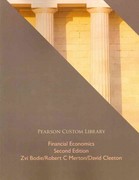The WACC is used as the discount rate to evaluate various capital budgeting projects. However, it is important to realize that the WACC is an appropriate discount rate only for a project of average risk Analyze the cost of capital situations of the following company cases, and answer the specific questions that Finance professionals need to address Consider the case of Turnbull Co. Turnbull Co, has a target capital structure of 58% debt, If its current tax rate is 40%, how much higher will 6% preferred stock, and 36% common equity. It has a Tumbull's weighted average cost of capital (WACC) bei before-tax cost of debt of 8.2%, and its cost of preferred it has to raise additional common equity capital by stock is 9,3% Issuing new common stock instead of raising the funds through retained earnings? If Turnbull can raise all of its equity capital from retained 0.80 eamings, its cost of common equity will be 12.4% 0.869 However, if it is necessary to raise new common equity, 0.839 it will carry a cost of 14.2%. 0.64% Turnbull Co. is considering a project that requires an initial investment of $570,000. The firm will raise the $570,000 in capital by issuing $230,000 of debt at a before-tax cost of 8.7%, $20,000 of preferred stock at a cost of 9.994and $320,000 or equity at a cost of 13.2%. The firm facer a tax rate of 40%. What will be the WACC for this project? Consider the case of Kuhn Co. Kuhn Co. is considering a new project that will require an initial investment of $20 million. It has a target capital structure of 35% debt, 2% preferred stock, and 63% common equity. Kuhin has no calable bonds outstanding that mature in five years with a face value of $1,000, an annual coupon rate of 10%, and a mange price of $1,050.75 The yield on the company's current bonds is a good approximation of the yield on any new bonds that it issues. The company can sell shares of preferred stock that pay an annual dividend of $9 at a price of $95.70 per share. BOOK OOO 20 F2 74 # 3 $ 4 % 5 & 7 6 2 through retained earrings 11 Tumbull can raise all of its equity capital from retained earnings, its cost of common equity will be 12.4%. However, if it is necessary to raise new common equity, it will carry a cost of 14.2%. 0.80% 0.86% O 0.83% 0.64% Tumbull Co. is considering a project that requires an initial investment of $570,000. The firm will raise the $570,000 in capital by issuing $230,000 of debt at a before-tax cost of 8.7%, $20,000 of preferred stock at a cost of 9.9%, and $320,000 of equity at a cost of 13.2%. The firm faces a tax rate of 40%. What will be the WACC for this project? Consider the case of Kuhn Co. Kuhn Co. is considering a new project that will require an initial investment of $20 million. It has a target capital structure of 35% debt, 2% preferred stock, and 63% common equity, Kuhn has noncallable bonds outstanding that mature in five years with a face value of $1,000, an annual coupon rate of 10%, and a market price of $1,050.76. The yield on the company's current bonds is a good approximation of the yield on any new bonds that it issues. The company can sell shares of preferred stock that pay an annual dividend of $9 at a price of $95.70 per share. Kuhn does not have any retained earnings available to finance this project, so the firm will have to issue new common stock to help fund it. Its common stock is currently seling for $33.35 per share, and it is expected to pay a dividend of $2.78 at the end of next year. Flotation costs will represent 8% of the funds raised by issuing new common stock. The company is projected to grow at a constant rate of 8.7%, and they face a tax rate of 40%. Determine what Kuhn Company's WACC will be for this project








